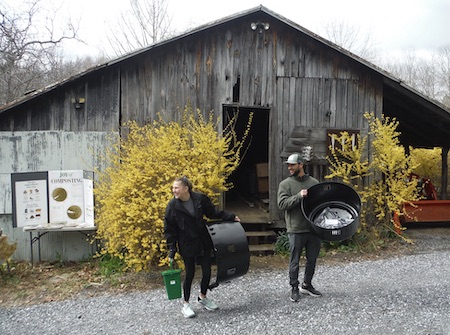 Greetings composting households! We are so excited to welcome you to the 2023 Backyard Compost Challenge. Over the course of this 10-week challenge you’ll get to know your composting cohort and how to best compost for your home. In this first blog post you’ll also get to know a bit about us and last year’s Compost Champions, who have some advice for a successful composting journey.
Greetings composting households! We are so excited to welcome you to the 2023 Backyard Compost Challenge. Over the course of this 10-week challenge you’ll get to know your composting cohort and how to best compost for your home. In this first blog post you’ll also get to know a bit about us and last year’s Compost Champions, who have some advice for a successful composting journey.
Briefly, I’m Madeline, one of your Challenge coordinators. This is my 2nd year helping out with the Challenge. I'll be writing these weekly blog posts and sending data upload reminders. Many of you may have met me while picking up your composting kits last weekend. I’m also your point of contact for questions. The other coordinator is Elise Sheffield. It is due to her hard work writing grants, working out logistics, and being a master planner that this community science project has seen such success and is able to return for a 3rd year.
Now for the advice from last year’s composting old hands– 20(!) of whom are also participating in the 2023 Challenge. This advice comes from a follow-up survey we recently conducted. First, develop a routine.The faster you’re able to find your rhythm for weighing and taking out the green pail to your composter the easier it’ll be.
The Champs also suggested gathering your “browns” now, to have them on hand as mix with the “greens” (your food scraps). We’ll discuss more about “browns” later but basically think dead leaves, paper towels, shredded cardboard, etc. Keep a pile or container next to your outdoor composter, so that you can add a bit whenever you dump the “greens.” This “parfait” approach helps maintain a good balance in your compost, which will enable the decomposers who break down your scraps to thrive.
Two final tidbits that stuck out to me as quite clever were a suggestion to put your kitchen scraps pail next to your kitchen trash receptacle and to put your Earth Machine on a patch of soil that you’d like to improve. Keeping your indoor scraps pail next to your kitchen trash receptacle can serve as a good reminder to separate your compostable and non-compostable waste. Placing the pail by the kitchen sink area is another great option. Meanwhile, when you put your Earth Machine on undernourished soil, you’ll be encouraging lots of nutrients and beneficial decomposers to show up and after a few months you can move the composter and uncover a new fertile and nourished spot for planting underneath.
The best piece of advice, however, is to develop a plan that works for you. Congratulations again on being selected to join this project – we’re looking forward to the adventure.
